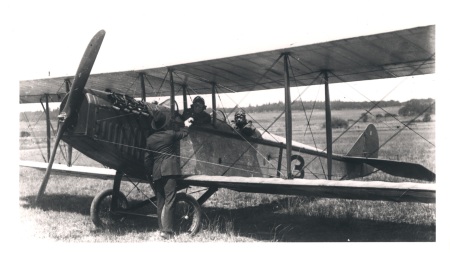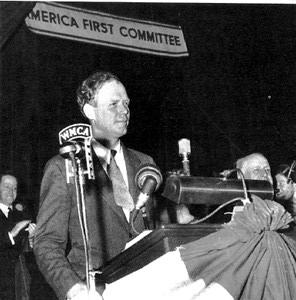In Abundant Grace, Book 5 of THE GRACE SEXTET, Grace Lampley is drawn into Operation Paperclip, a U. S. effort to export German scientists and engineers to work in U. S. laboratories and universities on nuclear weapons, rockets, and products for waging chemical and biological warfare. Pictured here is the top Nazi scientist brought to […]
Archive for the ‘Author’ Category
Werner von Braun at Peenemunde c. 1941
July 27, 2017Posted in Author | Leave a Comment »
Grace loves her man, but she must help export Nazi rocket engineers to the U. S. to save his life.
June 8, 2017In Abundant Grace, Book 5 of THE GRACE SEXTET, Grace Lampley is drawn into Operation Paperclip, a U. S. effort to export German scientists and engineers to work in U. S. laboratories and universities on nuclear weapons, rockets, and products for waging chemical and biological warfare. Pictured here is the top Nazi scientist brought to the U. S., Wernher von Braun. The younger von Braun is pictured with Major General Walter Dornberger, later a top executive for the Bell Aircraft Corporation, where he helped develop the X-15. The older von Braun is pictured with General John B. Medaris and Brig. General Holger N. Toftoy, when von Braun was working at Redstone Arsenal in Alabama.
Grace became ensnared in Operation Paperclip when she tried to get identification papers for Dirk Bergmann, an escaped German POW. She owed him for warning her that she was about to be swept up by the Gestapo for being a spy for the Allies while she was working as a clerk in the Ministry of Agriculture in the Government of the French State, in Vichy, France.
Abundant Grace is available from the Bookstore at FriesenPress.com.
Posted in Author | Leave a Comment »
The Fallen Woman and the Fallen Hero
February 25, 2015Wings of Grace, Book 3 of THE GRACE SEXTET, concludes with–now, you surely don’t think I’m going to give away the ending? But you know from reading Tides of Grace, the first book in the Grace Series, that if Grace hasn’t fallen she has surely stumbled before righting herself, so she’s my “fallen woman.” The “Fallen Hero” is none other that Charles Lindbergh. “Slim,” as he’s known to his friends, and Grace cross paths in Wings of Grace and they become friends. When they meet, in the mid-1920s, Lindbergh is not yet the “Lone Eagle” of legend; he’s a stunt pilot and a wing walker in air shows presented at fairs and exhibitions in the Midwest and in the Northeastern U. S. So is Grace’s friend (and her brother Damien’s girlfriend), Julie Thompson. Grace enjoys accompanying Julie on her weekend stunt flying expeditions, so she often sees Lindbergh.
Fast forward to 1936: Grace is living in France (one could say she’ ‘hiding’ in France) and again she finds herself in Lindbergh’s company, first in Paris, later in Berlin. By 1936 he is lionized wherever he goes. He’s a renowned aeronautical engineer, and in this capacity the American military attaché in Berlin invites him to the German capital to assess the strength of Germany’s new air force. He is also a renowned isolationist, a political position that endears him to Adolph Hitler and Hermann Goering. To Grace, Lindbergh is still just “Slim,” but to many in Europe and in the United States he is an apologist for the Nazi regime. As the years pass and another European war becomes inevitable, Lindbergh’s public speeches and private associations reveal him as ever more closely aligned with the motives and the means of Nazism. Grace continues to see him as the fearless, indomitable flyer she has known for years, a naive view that makes her a target for enlistment in Lindbergh’s cause of urging France and England to avoid war by capitulating to German political demands. In The Land of Grace, the fourth installment in my roman fleuve, Grace leaves her tiny farm in the South of France to become a spy for the American military attaché in Vichy, France, the capital for the French State that emerges after German overruns France in 1940. By this time, her friend’s reputation is tarnished beyond any redemption while she is becoming the vamp of Vichy in her pursuit of useful intelligence to pass along to her contacts.
Posted in Author | Leave a Comment »
Anna Karenina, by Leo Tolstoy
August 22, 2013Entertainment Weekly rated Anna Karenina as #1 in their “Top 100 Novels of All Time” so I got a copy and started reading. One tiny bit of my personal mythology is that I read Anna Karenina is high school, but the copy I found in the tiny library of the tiny school I attended was missing the last few pages. But if I did in fact read the book in the middle of the last century, I’ve forgotten everything about it. So, I’m changing my personal mythology. I don’t know where my false memory came from. Funny, the book I read had a baby blue cloth cover.
My digital reader tells me I’m 87% of the way through it in this century, and I’d say that if it is not the best novel I’ve ever read it is certainly the most thorough in its treatment of Anna’s fall from grace. The counter point to the Anna/Vronsky/Karenin plot is the Kitty/Vronsky/Levin plot, and that plot is so completely developed than I wonder why the book wasn’t entitled “Kostya Levin.” The development of both plots is so detailed that I’m compelled to attend closely to every sentence, every paragraph, for fear I’ll miss some telling elaboration of the truth. And page after page my critical self is nodding in assent: “yes, that’s true–so true.”
Posted in Author | Leave a Comment »
De Havilland Moth
August 16, 2013
Grace Lampley borrows Julie Thompson’s sportster to fly to several cities to visit banks where her boss has stashed his ill-gotten gains.
Posted in Author | Leave a Comment »
Curtiss JN-4
August 16, 2013The Curtiss company began building these aircraft in 1915 and by about 1920 they had built almost 7000. They were cheap and reasonably stable in the air, and they became the staple airplane in the early years of civil aviation in the United States. Charles Lindbergh bought one in 1923 and flew it for exhibition at county fairs. Grace Lampley walked and fell from the wing of one of these in the shows she and her brother’s girlfriend, Julie Thompson, developed for fairs and expositions in the northeastern U. S. in the mid 1920s. Grace Lampley crashed a “Jenny,” as they known, in the pine barrens of New Jersey and survived.
Posted in Author | Leave a Comment »
Curtiss JN-4
August 16, 2013
Type of plane flown by stuntwoman, Julie Thompson, and by Grace Lampley in Wings of Grace, Book 3 of The Grace Sextet
Posted in Author | Leave a Comment »
Wings of Grace airplanes
August 16, 2013The first is the Handley Page 0 /400, a heavy bomber developed for the Royal Flying Service in World War I. It was flown extensively in the last year of the war. The plane was a giant for its time: 63 feet long with a wing span of 100 feet. Two powerful engines were mounted between the wings. In combat it carried a crew of three. A pilot and co-pilot occupied an open cockpit, and a gunner manned machine guns mounted on the nose of the aircraft. It could carry a bomb load of 2000 lbs to a service ceiling to 8500 feet. In my story Damien Lampley, who flew this plane in World War I, adapts the bomber for civilian use as a freighter that he flies for Thompson Airlines, a company owned by his girlfriend, Julie Thompson, also a pilot.
Posted in Author | Leave a Comment »
Handley Page 0/400
August 16, 2013
The type of airplane Damien Lampley flew in WWI and adapted for civilian use with Thompson Airlines in 1919.
Posted in Author | Leave a Comment »
Writer’s Digest Contest for Self-Published Authors
November 23, 2012What did you like best about Tides of Grace: BOOK 1 of THE GRACE SEXTET
The novel is both moving and entertaining. The author does a magnificent job of transporting the reader back to the life of a girl in St. Louis a hundred years ago. The novel begins with a literal bang, the shotgun blast with which Grace’s father takes his own life. It’s typical of the novel’s strategy of intensification that Grace discovers her father’s body and gets his blood on herself on the same day she has her first period. Sexuality is the engine of this machine, and the author depicts various scenes of Grace’s erotic awakening (and it’s no accident that she reads Kate Chopin’s The Awakening): spying on her friend Dottie and Willy through an open window as they’re about to have intercourse, masturbating outdoors, having sex with her teacher in a closet at school, and taking Aunt Lydia’s “oily, green liquid” to induce an abortion. The novel applies a contemporary sense of values (including how white people should refer to black people) to American life in 1907. I think this revisionist approach is refreshing, a way of both righting some wrongs and making the novel more accessible to readers today. The dialogue is brilliantly rendered, with each character speaking in a distinctive, identifiable way. It’s a wonderful novel by a gifted author who clearly has more in mind for Grace, her brother Damien, and her friends Dottie and Cornelia in the planned sextet.
Tags:historical fiction, St. Louis, teen romance, Teen sexuality
Posted in Author | Leave a Comment »



